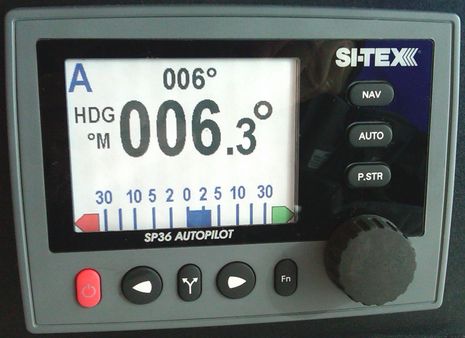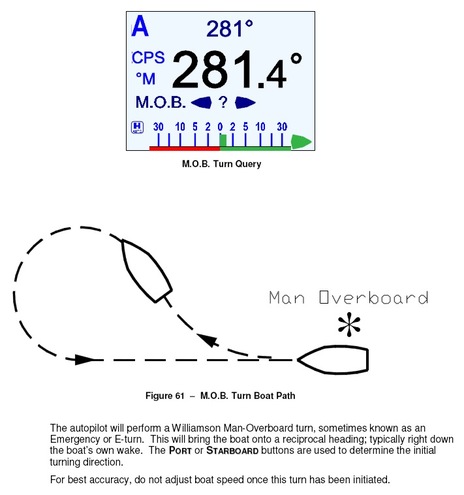Si-Tex SP36 autopilot, like ComNav's but different

My first reaction to a press release about the new Si-Tex SP36 autopilot -- sure to be posted at the Si-Tex site soon -- was that its nifty-looking color control head above looks exactly like one ComNav has offered for a while. Not that rebranding the ComNav gear, which has a good reputation (I think), is a bad thing. But what's actually going on here is that Si-Tex has contracted ComNav to manufacture an autopilot to its own specifications, and at least one difference looks like a smart idea to me...
Si-Tex has also gotten Airmar to build it a custom version of the H2183 compass that Dan Corcoran has become so fond of. It's called the Si-Tex HDK-11 and the SP36 autopilot is designed to work with it. In fact, according to Si-Tex, this is the only autopilot that can calibrate Airmar's high performance sensor directly, which means that an owner or installer won't have to mess with Airmar's Weather Caster software (unless they want to). And while Si-Tex and ComNav use the sensor's NMEA 0183 port for their autopilots, its NMEA 2000 port will be available for other uses. Si-Tex will even offer an optional NMEA 0183 to 2000 adapter so that the SP36 can further integrate with a mostly N2K vessel. I'll guess that it's an Actisense NGW-1, and an owner or installer could get one to work on their own, but when a single supplier offers all the interface bits and pieces, and supports them, that's a good thing.I've had a look at the manual for the Si-Tex pilot, along with a similar one from ComNav, but I haven't figured out what else is different about the SP36. They both look like pretty advanced systems, with virtual rudder feedback (if needed), ongoing performance improvement intelligence, the ability to perform maneuvers like the MOB turn below, and many more features. I understand that Si-Tex -- which went through a big management change last year -- has SP36 units in stock, at $3,300 with Virtual Feedback and HDK-11 compass, but without pump. Hopefully more info, manuals, etc. will be up on their site soon.


 Share
Share
Integration of a 3-axis sensor is great, but possibly a bit misleading. We are increasingly surrounded by systems (including us) who can't use all the information they are supplied.
Effectively applying pitch and yaw data to determine how to adjust the rudder to hold a steady course in a seaway is a difficult problem, particularly with the variety of hull shapes that must be considered. Of course they'll know if they're starting with a motor or sailing yacht, but there is so much more to the problem, ask any naval architect, or watch any world class helmsman at work.
Like most devices these days, the hardware is only an interesting as the software running it (imagine an iPhone running Windows Mobile!). I'd like to read a long press release from Si-Tex (or any other manufacturer except maybe NKE or B&G) about the investment they've made in the software controlling the autopilot and how it applies this data.